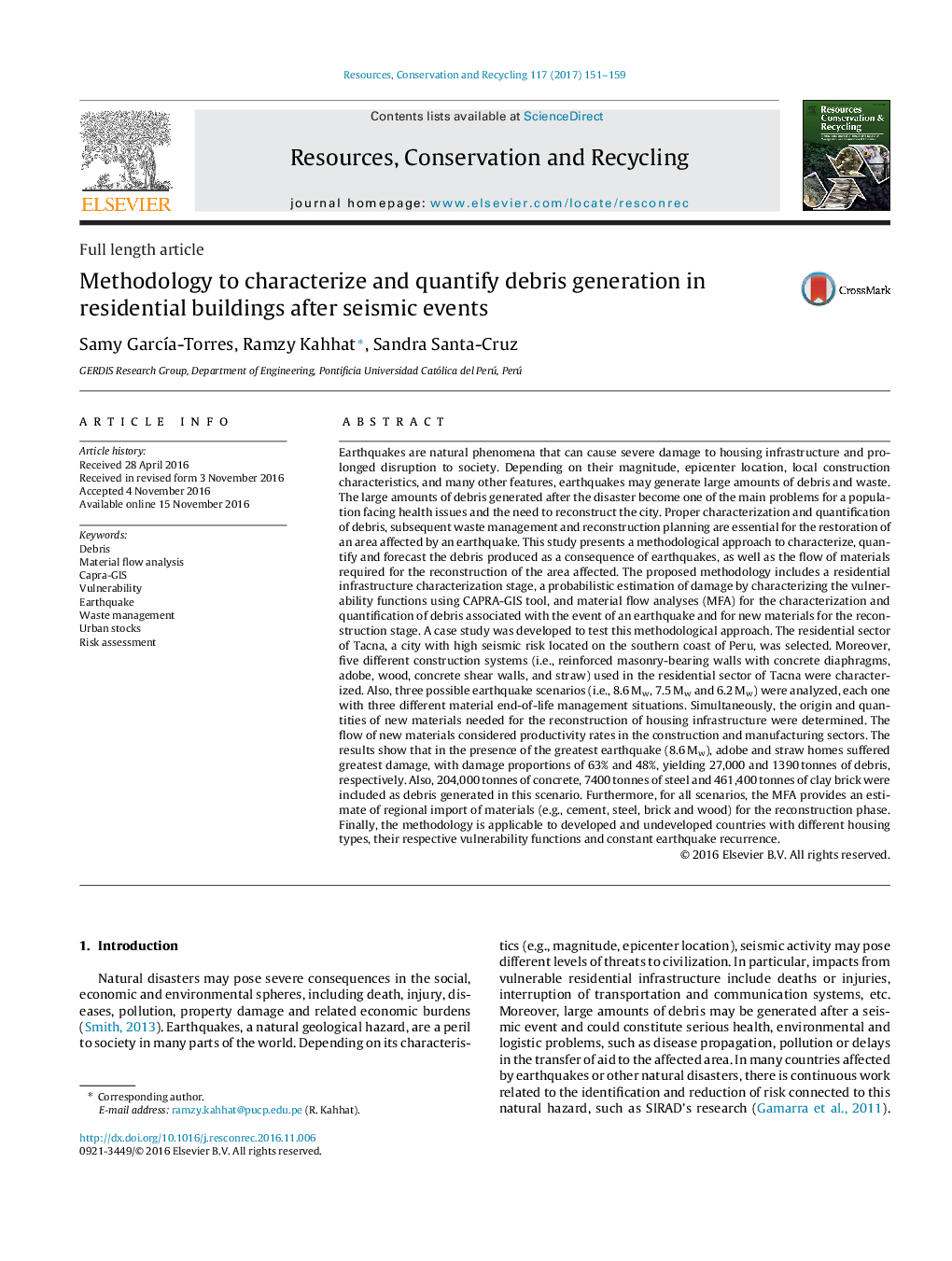| کد مقاله | کد نشریه | سال انتشار | مقاله انگلیسی | نسخه تمام متن |
|---|---|---|---|---|
| 5118895 | 1378185 | 2017 | 9 صفحه PDF | دانلود رایگان |
- A methodology to forecast, characterize and quantify debris after seismic events is proposed.
- Adobe and straw homes suffered greatest damage in the 8.6Â Mw. scenario.
- 204,000Â tonnes of concrete were converted into debris in the 8.6Â Mw earthquake.
- Regional import of materials is required for the reconstruction phase.
Earthquakes are natural phenomena that can cause severe damage to housing infrastructure and prolonged disruption to society. Depending on their magnitude, epicenter location, local construction characteristics, and many other features, earthquakes may generate large amounts of debris and waste. The large amounts of debris generated after the disaster become one of the main problems for a population facing health issues and the need to reconstruct the city. Proper characterization and quantification of debris, subsequent waste management and reconstruction planning are essential for the restoration of an area affected by an earthquake. This study presents a methodological approach to characterize, quantify and forecast the debris produced as a consequence of earthquakes, as well as the flow of materials required for the reconstruction of the area affected. The proposed methodology includes a residential infrastructure characterization stage, a probabilistic estimation of damage by characterizing the vulnerability functions using CAPRA-GIS tool, and material flow analyses (MFA) for the characterization and quantification of debris associated with the event of an earthquake and for new materials for the reconstruction stage. A case study was developed to test this methodological approach. The residential sector of Tacna, a city with high seismic risk located on the southern coast of Peru, was selected. Moreover, five different construction systems (i.e., reinforced masonry-bearing walls with concrete diaphragms, adobe, wood, concrete shear walls, and straw) used in the residential sector of Tacna were characterized. Also, three possible earthquake scenarios (i.e., 8.6Â Mw, 7.5Â Mw and 6.2Â Mw) were analyzed, each one with three different material end-of-life management situations. Simultaneously, the origin and quantities of new materials needed for the reconstruction of housing infrastructure were determined. The flow of new materials considered productivity rates in the construction and manufacturing sectors. The results show that in the presence of the greatest earthquake (8.6Â Mw), adobe and straw homes suffered greatest damage, with damage proportions of 63% and 48%, yielding 27,000 and 1390Â tonnes of debris, respectively. Also, 204,000Â tonnes of concrete, 7400Â tonnes of steel and 461,400Â tonnes of clay brick were included as debris generated in this scenario. Furthermore, for all scenarios, the MFA provides an estimate of regional import of materials (e.g., cement, steel, brick and wood) for the reconstruction phase. Finally, the methodology is applicable to developed and undeveloped countries with different housing types, their respective vulnerability functions and constant earthquake recurrence.
Journal: Resources, Conservation and Recycling - Volume 117, Part B, February 2017, Pages 151-159
